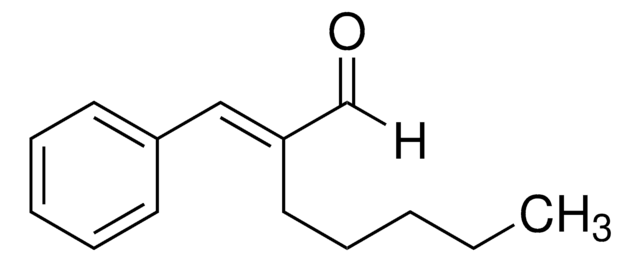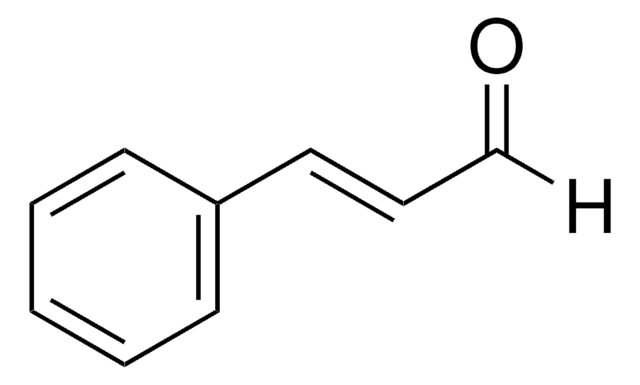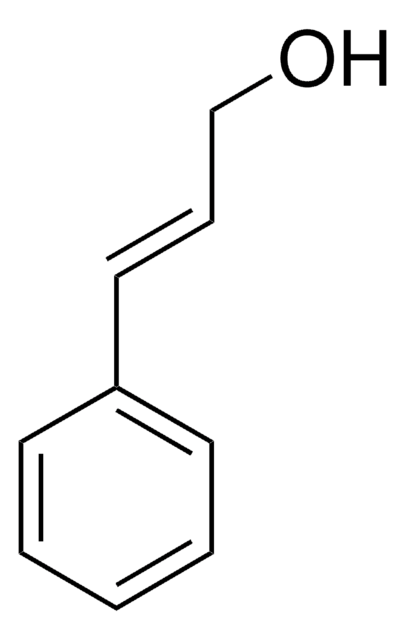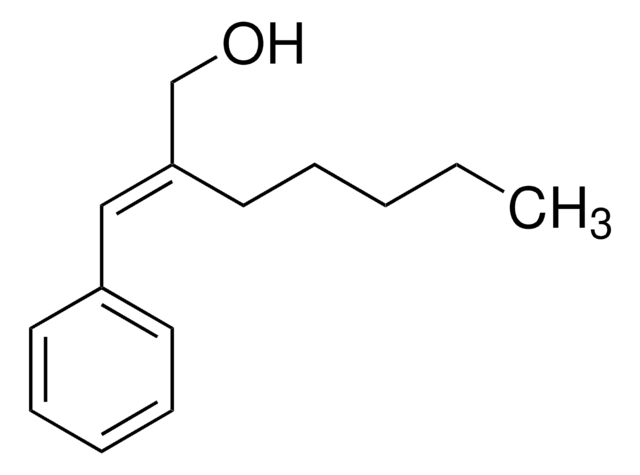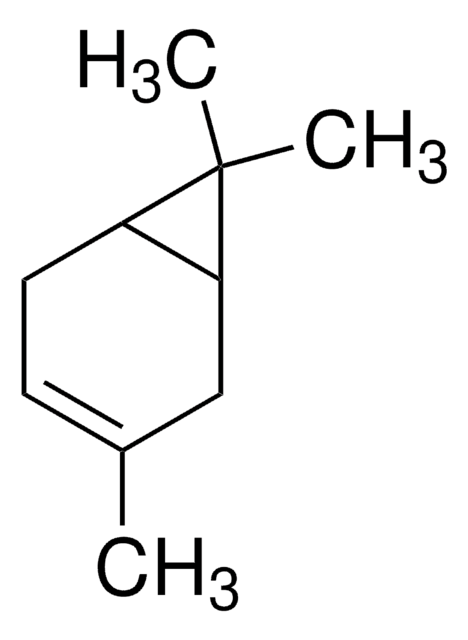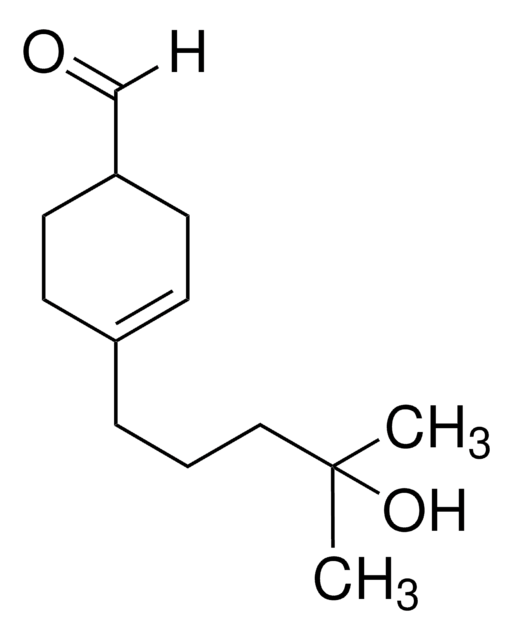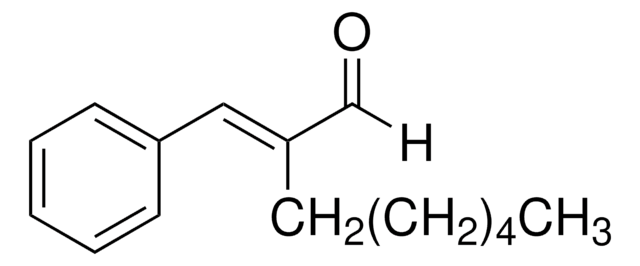288993
α-Amylcinnamaldehyde
97%, mixture of cis and trans
Synonym(s):
alpha-Amylcinnamaldehyde
Sign Into View Organizational & Contract Pricing
All Photos(2)
About This Item
Linear Formula:
C6H5CH=C[(CH2)4CH3]CHO
CAS Number:
Molecular Weight:
202.29
EC Number:
MDL number:
UNSPSC Code:
12352100
PubChem Substance ID:
NACRES:
NA.22
Recommended Products
Quality Level
Assay
97%
form
liquid
refractive index
n20/D 1.557 (lit.)
bp
287-290 °C (lit.)
density
0.97 g/mL at 25 °C (lit.)
functional group
aldehyde
phenyl
storage temp.
2-8°C
SMILES string
[H]C(/C(CCCCC)=C/C1=CC=CC=C1)=O
InChI
1S/C14H18O/c1-2-3-5-10-14(12-15)11-13-8-6-4-7-9-13/h4,6-9,11-12H,2-3,5,10H2,1H3/b14-11+
InChI key
HMKKIXGYKWDQSV-SDNWHVSQSA-N
Looking for similar products? Visit Product Comparison Guide
General description
The short-term feeding studies in rats was carried out using α-amylcinnamaldehyde, a flavouring matter.
Signal Word
Warning
Hazard Statements
Precautionary Statements
Hazard Classifications
Aquatic Chronic 2 - Skin Sens. 1
Storage Class Code
10 - Combustible liquids
WGK
WGK 2
Flash Point(F)
294.8 °F
Flash Point(C)
146 °C
Personal Protective Equipment
dust mask type N95 (US), Eyeshields, Gloves
Choose from one of the most recent versions:
Already Own This Product?
Find documentation for the products that you have recently purchased in the Document Library.
Toxicological tests on flavouring matters.
B L Oser et al.
Food and cosmetics toxicology, 3(4), 563-569 (1965-10-01)
Eiram N Elahi et al.
Chemical research in toxicology, 17(3), 301-310 (2004-03-18)
Skin protein modification (haptenation) is thought to be a key step in the manifestation of sensitization to low molecular mass chemicals (<500 g/mol). For sensitizing chemicals that are not protein reactive, it is hypothesised that metabolic activation can convert such
J D Guin et al.
Journal of the American Academy of Dermatology, 8(1), 76-80 (1983-01-01)
Sensitivity to alpha-amylcinnamic aldehyde (alpha-AcAld) is apparently uncommon, but, like allergy to alpha-amylcinnamic alcohol (alpha-AcAlc), it often accompanies allergy to the perfume in Mycolog cream. Although alpha-AcAlc is a known ingredient, alpha-AcAld is not. However, gas-liquid chromatographic analysis shows alpha-AcAld
S C Rastogi et al.
Contact dermatitis, 38(1), 29-35 (1998-03-21)
Deodorants are one of the most frequently used types of cosmetics and side-effects from them are common. Recent studies relate perfume allergy to this type of product. 73 deodorants were analyzed by gas chromatography--mass spectrometry for the determination of the
S C Rastogi et al.
Contact dermatitis, 34(6), 423-426 (1996-06-01)
In the present study, we have investigated 42 cosmetic products based on natural ingredients for content of 11 fragrance substances: geraniol, hydroxycitronellal, eugenol, isoeugenol, cinnamic aldehyde, cinnamic alcohol, alpha-amylcinnamic aldehyde, citral, coumarin, dihydrocoumarin and alpha-hexylcinnamic aldehyde. The study revealed that
Our team of scientists has experience in all areas of research including Life Science, Material Science, Chemical Synthesis, Chromatography, Analytical and many others.
Contact Technical Service